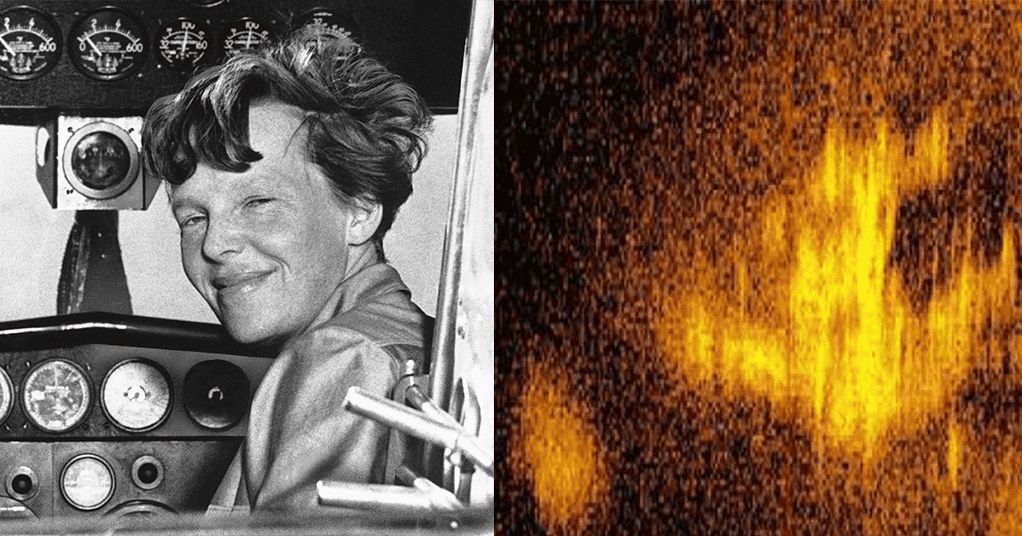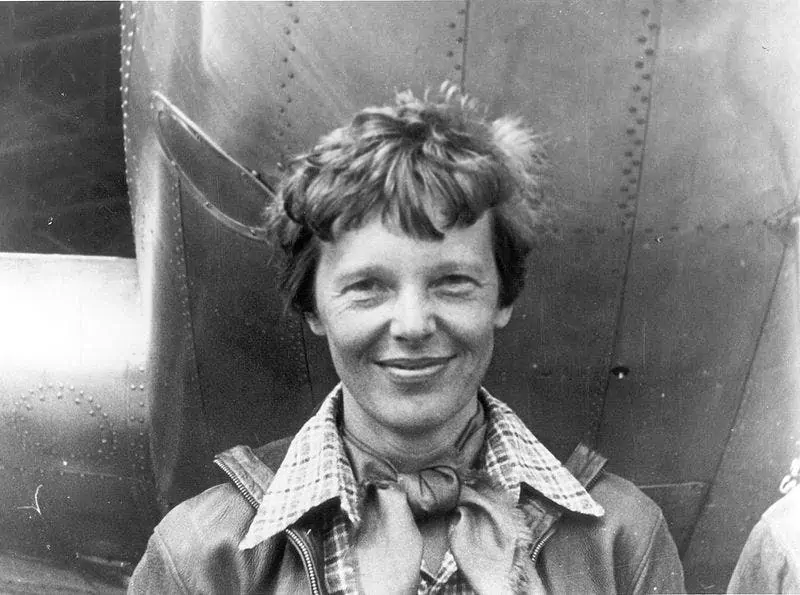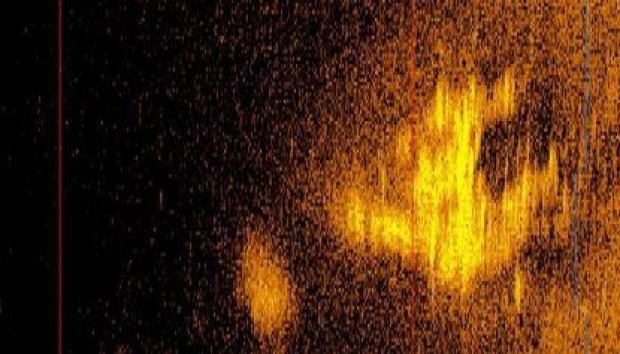
In a remarkable turn of events that could rewrite a chapter of aviation history, Tony Romeo, a pilot and former US Air Force intelligence officer, believes he has discovered Amelia Earhart’s long-lost aircraft at the bottom of the Pacific Ocean.
Utilizing a high-tech unmanned submersible, Romeo embarked on a daring 100-day sea voyage, scouring a vast expanse of the ocean floor. His mission was fueled by a deep fascination with one of the 20th century’s greatest mysteries: the disappearance of Earhart, a pioneering aviator, and her navigator, Fred Noonan, in 1937.
The expedition organized by Deep Sea Vision, a marine exploration company from South Carolina, utilized the “Hugin” drone, a sophisticated submersible. The sub captured the sonar image of an aircraft-shaped object about 4,800 meters (16,000 feet) below the Pacific Ocean‘s surface. The object is less than 160 km (100 miles) from Howland Island, Earhart’s destination at the time of her disappearance where her plane was supposed to refuel.
What happened to Amelia Earhart?

In 1937, Amelia Earhart, the first woman to fly across the Atlantic, embarked on a groundbreaking mission: to circumnavigate the globe along the equatorial route, a feat not yet accomplished by a woman. Alongside her navigator, Fred Noonan, Earhart piloted the Lockheed Model 10-E Electra.
Their journey, already six weeks and 20,000 miles in (two-thirds of their mission complete), met a tragic fate on July 2, 1937, as they headed towards Howland Island in the Pacific, a tiny landmass midway between Hawaii and Australia.
The challenge of locating Howland Island, a mere strip of land stretching 2,000 meters long and 460 meters wide, was immense. From Earhart’s altitude, distinguishing it from the cloud formations must have been daunting. Earhart and Noonan, fully aware of these difficulties, had devised a sophisticated navigation plan. They intended to use celestial navigation and maintain radio contact with a U.S. Coast Guard vessel near Howland Island.
However, a combination of unforeseen circumstances foiled their meticulous preparations. Reports indicated possible damage to a radio antenna during takeoff, and they faced extensive overcast conditions that morning. Further, investigations suggested they might have relied on outdated maps.
At 7:20 AM on July 2, Earhart communicated their position: 32 kilometers southwest of the Nukumanu Islands, with fuel running low. “We must be on you, but we cannot see you. Fuel is running low. Been unable to reach you by radio. We are flying at 1,000 feet,” she reported. The Coast Guard ship tried to respond and even used oil burners to signal the flyers, but to no avail. Noonan’s navigational charts, it was later found, misplaced Howland Island’s position by about five nautical miles. It’s likely that their plane, tragically, ran out of fuel.
Despite an extensive search with 66 aircraft and nine ships, the fate of Earhart and Noonan remains shrouded in mystery. Over the years, the enigma of Earhart’s final days has only deepened, fueling a multitude of conspiracy theories and speculation.
One theory posits that Earhart and Noonan may have landed on Nikumaroro Island, formerly known as Gardner Island, where they potentially survived for some time. This hypothesis gained traction due to the discovery of artifacts on the island, including a piece of plexiglass that might have come from Earhart’s plane and a shoe similar to those Earhart wore.
Others have proposed more far-fetched theories, including speculation that Earhart was captured by Japanese forces, or that she survived and assumed a new identity.
Clues from the deep

Romeo comes from a long family of pilots and has always felt a strong personal connection to this enigma. So much so that he sold all his commercial real estate properties to partially fund the $11 million search mission.
The crew of 16, Romeo included, embarked on a research vessel last September from Tarawa, Kiribati. For months, they employed the “Hugin” drone manufactured by the Norwegian company Kongsberg to scan 13,500 square kilometers (5,200 square miles) of the ocean floor.
“This is maybe the most exciting thing I’ll ever do in my life,” he told the Wall Street Journal. “I feel like a 10-year-old going on a treasure hunt.”
About a month into the expedition, Romeo’s team detected an aircraft-shaped object approximately 100 miles from Howland Island. However, the potential discovery didn’t become apparent until the 90th day of the voyage when analyzing the submersible’s data. By this time, the crew was too far away from Howland Island to return to have a second, more thorough look.
Romeo plans to return next year to the site with advanced sensors and photography equipment to confirm the identity of the object. The mission, involving significant investment and collaboration, aims to not only verify the sonar readings but also consider the possibilities of retrieving and preserving the aircraft (if there’s one in the first place). He doesn’t plan on stopping with Earhart either.
“There’s lots of cool stuff in the Pacific — WWII aircraft and flight MH370 are still out there, and maybe we can make a run at that at some point,” Romeo told Business Insider. “I’m not announcing yet that we are, but I’d love to collaborate with other folks on other projects since we’ve got the state-of-the-art equipment. There’s only a couple of these in the world, and finding these things out is in demand.”






